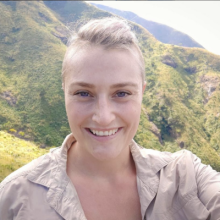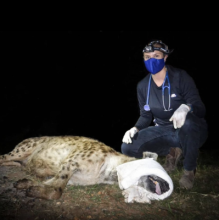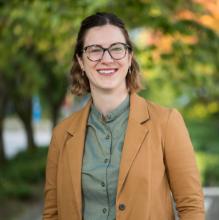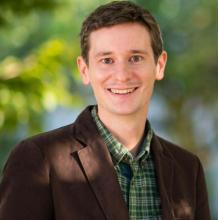This project has many collaborators across different disciplines due to the complexity of the disease system under study. As a veterinarian, I work with the Malawi Department of Animal Health and Livestock Development, and I support veterinary student research at the Lilongwe University of Agriculture and Natural Resources. In protected wildlife areas I work together with the Malawi Department of National Parks and Wildlife and their wildlife rangers. I also collaborate with wildlife conservation NGOs such as Wildlife Action Group, Conservation Research Africa, and World Veterinary Services.
Research Description
East African trypanosomiasis is an important cause of human fatality and domestic animal illness and death in sub-Saharan Africa. The microscopic parasites, called trypanosomes, are transmitted among animals and people by tsetse flies. Malawi is a small Southern African country, which reports the highest incidence of East African trypanosomiasis globally, and in 2019 the reported cases tripled. Evidence suggests that wildlife species are the source of this disease for people in Malawi, where human cases cluster around conservation areas. This pattern is likely due to the presence of tsetse fly habitat in protected areas, their preferred wildlife host species, and high human population density around park boundaries. The re-emergence of this disease creates an urgent need to protect at-risk human populations, but the issue is complex, involving insects, numerous wildlife species, and people living in remote rural areas. To address complexity, this project uses an interdisciplinary One Health approach, seeking to understand how animals, people, pathogens, and the environment intersect to promote or reduce health, and brings together diverse expertise across multiple sectors, a strength for complex disease systems where a single disciplinary approach would fail. My research goal is to begin to elucidate the disease ecology of East African trypanosomiasis in the context of a protected wildlife conservation area in Malawi. Specifically, I aim to describe the socio-ecological relationships between humans, the wildlife reservoir hosts, and the tsetse disease vector to elucidate factors which contribute to the amplification or dilution of disease spillover risk to people. This is a mixed methods study: I work together with Indigenous communities surrounding a protected wildlife conservation area and qualitative methods in social science to investigate the knowledge and practices of local people towards tsetse, and to explore possible factors influencing human tsetse contact and local methods for reducing exposure to the tsetse vector. Concurrently, I use quantitative methods in ecology with the Department of National Parks and Wildlife and in molecular biology with the Malawi-Liverpool Wellcome Trust, to describe the relationships between wildlife populations, tsetse flies, and trypanosomes.
What does being a Public Scholar mean to you?
Being a public scholar means harnessing academic rigour together with interdisciplinarity, collaboration, and public engagement to undertake research that is responsive and accountable to society. It also means joining a diverse community that values applied research and disrupting the boundaries of academia through creative science communication.
In what ways do you think the PhD experience can be re-imagined with the Public Scholars Initiative?
The PSI restructures the PhD experience by providing inspiration to students through mentorship and networking for research that is action-oriented and collaborative with diverse partners outside of academia.
How do you envision connecting your PhD work with broader career possibilities?
I hope that my PhD work will help me continue to bridge silos of biodiversity conservation, wildlife health, and public health when defining research questions, creating solutions, and communicating science.
How does your research engage with the larger community and social partners?
This project has many collaborators across different disciplines due to the complexity of the disease system under study. As a veterinarian, I work with the Malawi Department of Animal Health and Livestock Development, and I support veterinary student research at the Lilongwe University of Agriculture and Natural Resources. In protected wildlife areas I work together with the Malawi Department of National Parks and Wildlife and their wildlife rangers. I also collaborate with wildlife conservation NGOs such as Wildlife Action Group, Conservation Research Africa, and World Veterinary Services. This project engages and collaborates with local community partners through their village headmen and health committees, and the national park’s community extension team. My work falls under the STRESS (Strengthening Resilience against Sleeping Sickness) project at Kamuzu University of Health Sciences (KUHES), and my in-country KUHES supervisor is an Indigenous parasitologist and assistant director of the Malawi-Liverpool Wellcome Trust Clinical Research Programme, where much of the molecular work for my research is carried out. In Canada, genomic analysis is carried out in collaboration with Dr. William Hsiao at Simon Fraser University.
Why did you decide to pursue a graduate degree?
Since obtaining my DVM degree in 2013, I have participated in and led several small research projects and I wanted to improve my research skills. I pursued graduate-level research training to develop skills in grant writing, study design, data analysis, statistical programming, and science communication.
Why did you choose to come to British Columbia and study at UBC?
I came to UBC specifically to work with Dr. Chelsea Himsworth. Dr. Himsworth is known for her work with the Canadian Wildlife Health Cooperative and leads several impactful research projects on the epidemiology of zoonotic diseases, including the Vancouver Rat Project and research on high path avian influenza.
Being a public scholar means harnessing academic rigour together with interdisciplinarity, collaboration, and public engagement to undertake research that is responsive and accountable to society.







